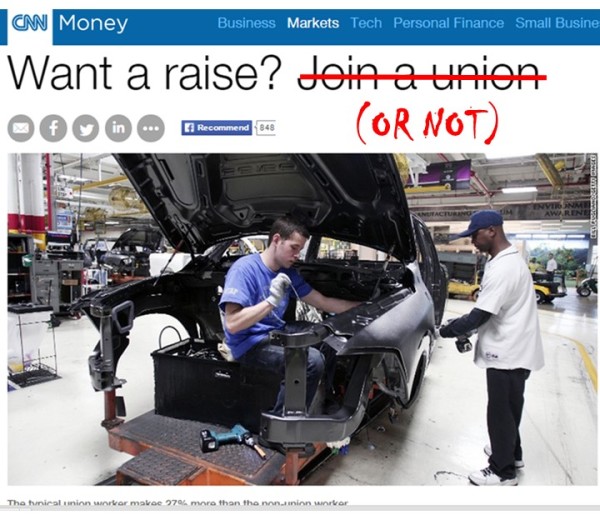
The U.S. Department of Labor’s Bureau of Labor Statistics has released its annual labor union membership report [in PDF].
As in previous years, despite some large organizing wins–like the unionization of American Airlines’ passenger service representatives–unions were not able to overcome the attrition caused by company layoffs, as well as growth in the number of non-union jobs as the economy continues to improve.
Here is the overview
In 2014, the union membership rate–the percent of wage and salary workers who were members of unions–was 11.1 percent, down 0.2 percentage point from 2013, the U.S. Bureau of Labor Statistics reported today. The number of wage and salary workers belonging to unions, at 14.6 million, was little different from 2013. In 1983, the first year for which comparable union data are available, the union membership ratewas 20.1 percent, and there were 17.7 million union workers.
[snip]
In 2014, 7.2 million employees in the public sector belonged to a union, compared with 7.4 million workers in the private sector. The union membership rate for public-sector workers (35.7 percent) was substantially higher than the rate for private-sector workers (6.6 percent).
Read the full BLS release here.



